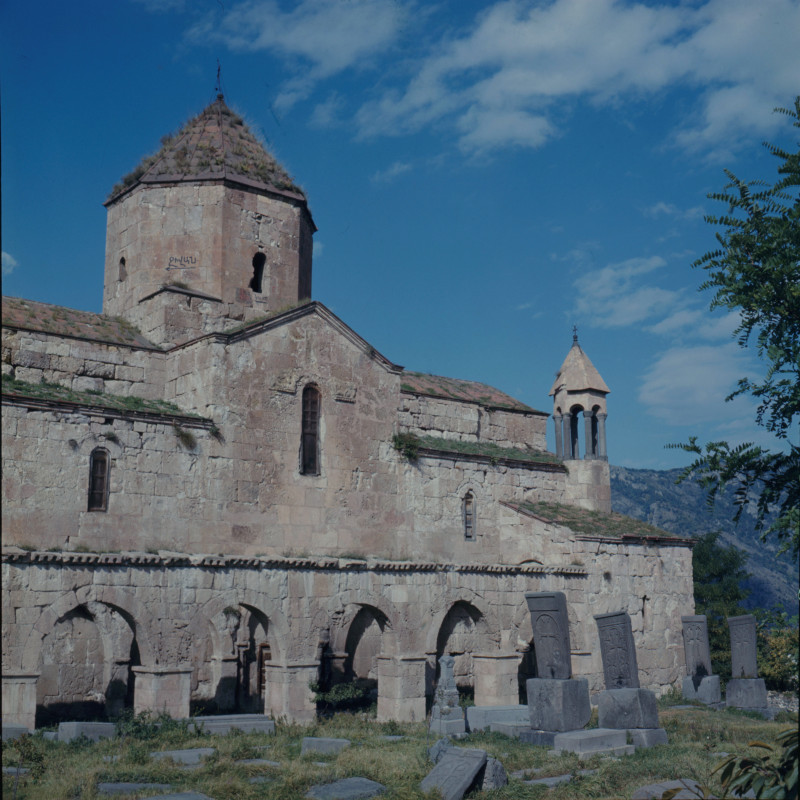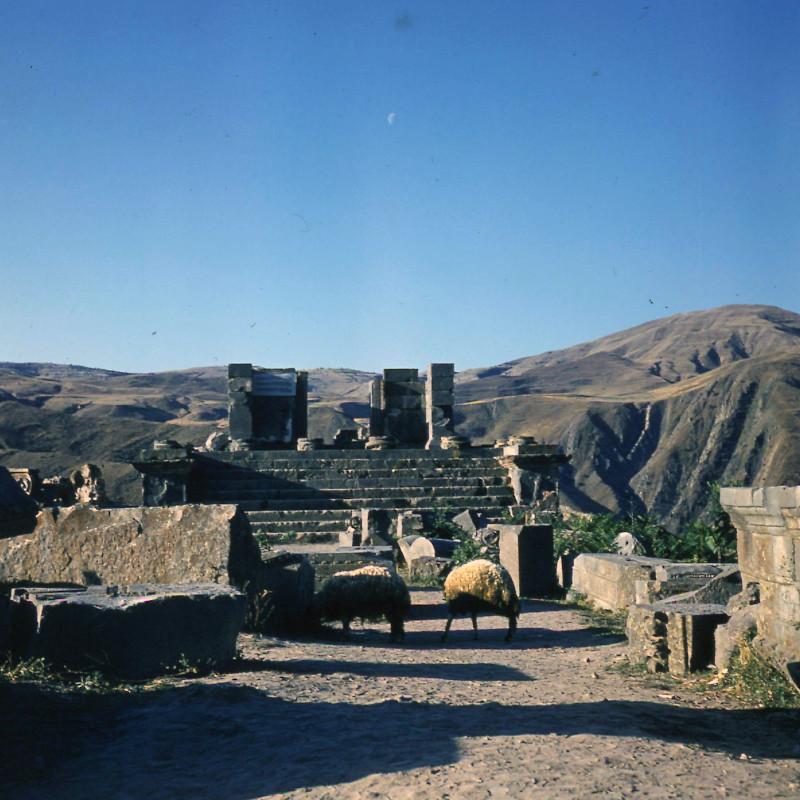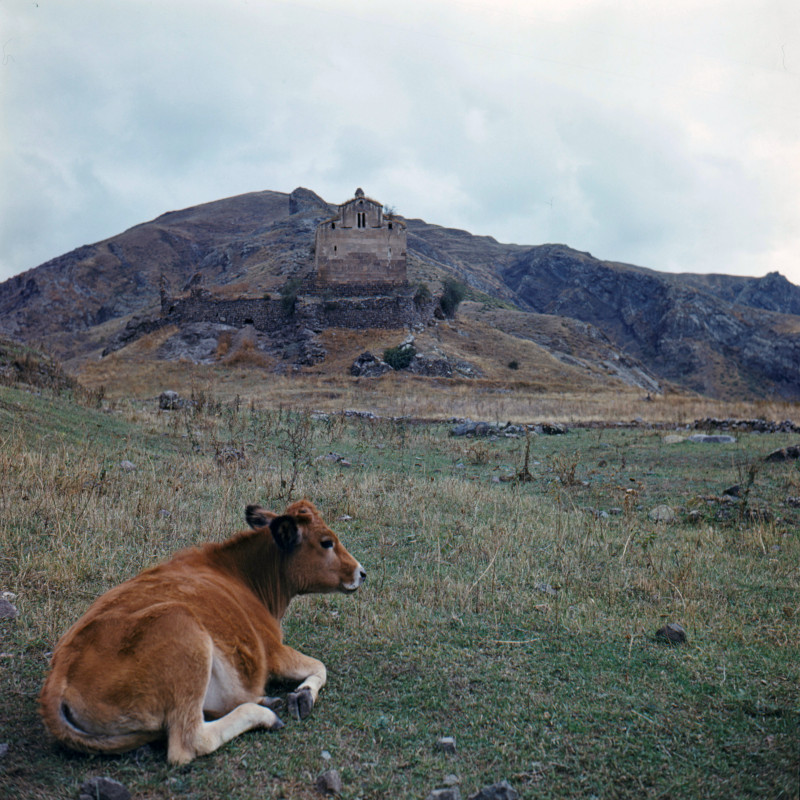OSCOP
Observing South Caucasus’ Historical Landscape: An Open Photo Archive
Project
The OSCOP project aims to critically recover the collection of photographs on the cultural heritage of the South Caucasus taken in the Soviet period by scholars working at the Armenian Culture Studies and Documentation Center (CSDCA), founded in Milan by Adriano Alpago Novello in 1976. Since 1969, Alpago Novello has led several research missions in Armenia, Georgia, Iran, Syria, and Turkey and organized the documentation collected during these excursions, giving birth to a wide range of important publications on medieval architecture of the South Caucasus. In 1992, the CSDCA moved its official headquarters from Milan to Venice, to the Loggia del Temanza, the current location of the photographic archive.
Making the photographic collection available to contemporary researchers by transforming it into an open-access digital photo archive is a primary goal of the project. Systematic study of this archive promises to shed new light on the historical landscapes of the South Caucasus region and the history of Western art-historical studies of the Near East. Applying a range of methodologies, including digitizing, cataloging and studying the archive, the OSCOP project will open up new analytical frameworks, which consider how natural disasters, political tensions, and clashes between countries caused a rapid process of alteration in the natural and monumental heritage of the South Caucasus.
Goals
The main goal of the OSCOP project is to apply new methodological orientations to the study of the cultural heritage of the South Caucasian region, contributing to the urgent initiatives dedicated to the investigation and protection of this global heritage.
To achieve this goal, the working group will implement the following main actions:
Action 1
Collect, digitalize, and catalog Alpago Novello’s photographic documentation to create an open-source database that will satisfy a broad request for access. The OSCOP open-source database represents an innovative step into this field for several reasons.
Firstly, the CSDCA photo collection covers a wide geographical area (Armenia, Georgia, Turkey, and Iran), providing a starting point for conceiving of the Southern Caucasus as a cradle of cross-cultural traditions.
Secondly, the database structure has a specific focus on accessibility. Users will find toponyms in the original language and historical and current place names in English (rendered through an official romanization system); specific attention is, moreover, paid to including indigenous critical concepts, part of the intangible cultural heritage of any culture, in the database structure.
This attentive documentation will make the database a multidisciplinary research tool spanning the history of art and architecture of the South Caucasus and reaching more technical studies that analyze the preservation policies adopted for each building. Indeed, the OSCOP database provides detailed information on each item, describing the subject of the photographs and the photo object itself. Thirdly, each photo will be freely available online and downloadable to give users virtual access to each site.
Action 2
Share and compare the content with other institutions. With an already established network of partners, OSCOP will pursue this action to allow and encourage cross-study data between international photo archives.
The Kunsthistorisches Institut in Florenz shares the documentation collected in Georgia and Armenia with UNIVE and CSDCA to give users access to double layers of data: the OSCOP photo collection from the seventies and the Georgia Project digital photo collection from 2006-2010. The aim is to involve foreign institutions in the existing network and to collaborate with research groups specialized in South Caucasus heritage preservation and promotion.
Action 3
Develop new research courses inviting the international academic community to reflect on how to read the historical landscape of a specific area through photography. Heritage studies need to be re-thought with a stronger focus on the interplay of human and non-human agencies. Scholars believe that the Anthropocene Epoch began in 1950 when there was a dramatic increase in human activity.
Thanks to efficient photo collection cataloging, digital humanities systems, and up-to-date theoretical observation methodologies, art historians can observe the transition of medieval monuments and landscapes to this new Epoch and, through the observation of photographs, recover historical layers lost in time. Because of the lack of information on the urban space in the Caucasus in medieval times, a focus on the historical landscape is valuable for historians, archeologists, and art historians of this region.
Outreach
- 16th December 2023
Presentation of the OSCOP Project at the Asiac 18th Annual Conference, Sapienza University of Rome.
- 19th October 2023
Presentation of the OSCOP Project at the Department of Art History of Yerevan State University, Armenia. - 12th-14th July 2023
Presentation of the paper “Observing South Caucasus’ Historical Landscape: An Open Photo Archive. Building Geohistorical Narratives through the OSCOP Project” at the 6th CHAM International Conference "Heritage for a Common Future / Future(s) for a Common Heritage", Universidade NOVA de Lisboa - 21st April 2023
Presentation of the Project “Observing South Caucasus’ Historical Landscape: An Open Photo Archive” at the 9th Seminar on Armenian and Eastern Christian Art, Ca' Foscari University of Venice
Team
PrincipaI Investigator: Stefano Riccioni
Associate researchers: Francesca Penoni, Beatrice Spampinato
In collaboration with:
- Gerhard Wolf, Annette Hoffmann (Kunsthistorisches Institut in Florenz - Max Planck Institut)
- Armenian Culture Studies and Documentation Center (CSDCA)









